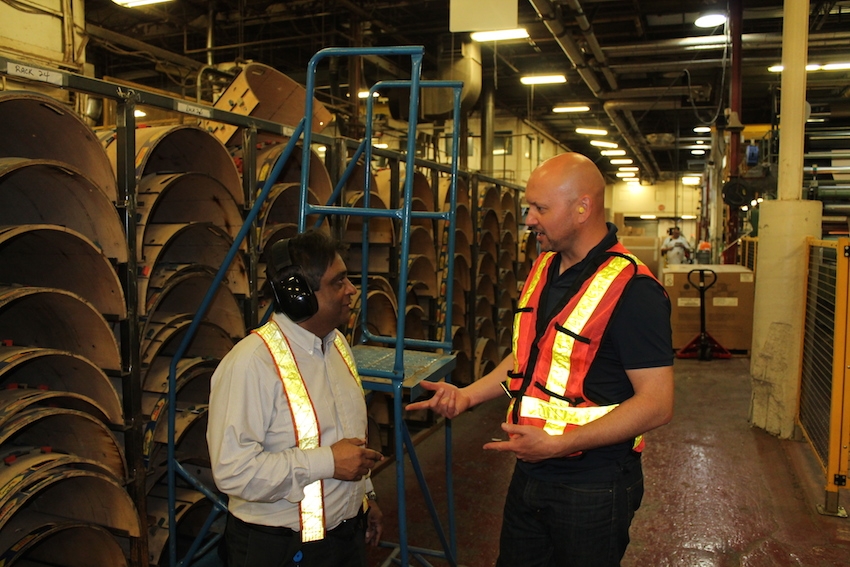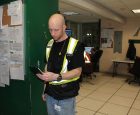
How supervisors can make a huge difference to your organization’s safety bottom line
June 20, 2017
By Treena Hein

Jun. 20, 2017 – As companies across the province have noticed, the Ontario Ministry of Labour has been placing increasing emphasis on supervisor responsibility and accountability when it comes to safety. Indeed, prosecution of supervisors has risen in recent years, and it is prudent for employers to ensure their supervisors are carrying out their duties appropriately.
This is the view of Jerry Traer, a program training specialist at North Bay, Ont.-based Workplace Safety North (WSN), who presented at the Partners in Prevention safety conference in Mississauga this May.
“We focused on Atlantic Packaging as a case study, not only the training all of [its] 150+ supervisors, but also the evaluation months later to ensure they were incorporating the concepts,” explains Traer. “It is critical to follow up and make sure what is supposed to be done by competent supervisor is actually being done.”
The presentation was co-hosted by Mark Tranter, corporate health and safety coordinator at Atlantic Packaging.
A competent supervisor, as defined by the Ontario Occupational Health and Safety Act, is a person who is qualified because of knowledge, training and experience to organize the work and its performance, is familiar with the Act and the regulations that apply to the work, and has knowledge of potential or actual workplace dangers to health or safety.
WSN created a Competent Supervisor training program several years ago after recognizing there was a gap between the training of joint health and safety committee (JHSC) members and supervisors.
“We created this program to bridge that gap by making supervisors aware of their legal duties and responsibilities,” Traer explains, “and to provide them with a sound foundation of knowledge to deal with the many issues they face.”
Atlantic Packaging Ltd. made a training request to WSN in 2015. Founded in 1945, the private Canadian company of 2000 employees manufactures 100 per cent-recycled material for the Canadian and U.S. markets.
“We had discussions over several months to plan out the program,” Traer recalls. “These discussions included a dry run of the program for senior management, which led to some requests for program modifications, including the use of actual Atlantic Packaging forms, policies and procedures.”
A follow-up evaluation process would be included to measure the use of various tools: notebook, hazard reporting form, workplace inspection form, and incident investigation process.
The process begins
Before training began, the Atlantic Packaging supervisors had only a basic knowledge of their legal responsibilities. And, as is typical in a manufacturing setting in a company of significant size, the company has several sites featuring very unique working environments — including multiple shifts, schedules and differing availability of support — which can all contribute to the creation of safety gaps.
“It also must be kept in mind that all human beings have differing learning styles and information retention capabilities,” Traer says. “Not only must supervisors learn, but they must also train and monitor others.”
In the end, the Atlantic Packaging supervisor safety program involved standardizing the content and creating a uniform knowledge base among all the supervisors, as well as empowering them to handle likely scenarios. A linear thought process for managing incidents was created — one that emphasizes use of procedures and keeps things as simple as possible.
The training started in January 2015 and by the end of the year, 143 supervisors had been trained. In 2016, 25 more supervisors were through the training and 132 had been evaluated. By May 2017, 30 more supervisors had completed the program, and more follow-up evaluations will be done this summer.
Evaluation results
As is typical with implementation of new programs of any kind, Traer and his team found some supervisors effectively incorporated the tools, but others had not embraced some or any of the program elements — reverting back to old ways. There is, therefore, a need in any company to put something in place to ensure everyone is on board.
“Compliance relates to how much value is perceived in the training,” Traer notes. “Those that buy in excel at completing their obligations, and those that view the training as just some added training do not use the various tools to their advantage.”
In term of specific tool use at Atlantic Packaging, the incident investigation tool was found to be effective at uncovering root cause. There was also a high rate of investigation sign-off by management, with managers adding comments, recommendations and follow-up actions. WSN recommends that managers review and comment on every incident investigation.
“This gives supervisors feedback about whether or not they are on the right track,” notes Traer. “Managers should also utilize an incident investigation critique form that is submitted to the safety department, and review the form with the supervisor to go over anything that is missing.”
In terms of notebook tool usage, the notebooks of supervisors already identified as top performers were impeccable, with multiple entries per day, colour-coded appropriately.
“These supervisors said the notebook had become a must for them, and that they found value in cataloguing and going back and closing the loop,” Traer says. “However, some supervisors were not filling out their notebook at all, and so there was no record of issues being identified, logged and/or corrected. These supervisors are vulnerable to prosecution and fines.”
Because of the possible inconsistency at any company, WSN recommends that notebook use be formally considered a core duty of all supervisors, and if needed, part of their pay for performance. Traer says managers should review the notebooks on a regular basis for completeness and identify opportunities for improvement as required, tying all this to each supervisor’s performance appraisals.
Lastly the tool to note is the workplace inspection/hazard reporting tool, which was fairly new to Atlantic Packaging.
“After this tool is introduced, we recommend all supervisors conduct workplace inspections outside of the JHSC inspection on a monthly basis and complete a hazard reporting form as required,” says Traer. “And again, supervisors must be held accountable for these processes.”
Tranter says the Competent Supervisor program has ensured that all involved members of the Atlantic Packaging team understand their responsibilities, which in turn provide protection for the entire business.
“The accountability gained with the follow-up assessments is profound,” he notes.
Advertisement
- Harting MICA mini industrial computer now available with EtherCAT board
- Ford to import Focus small car from China


